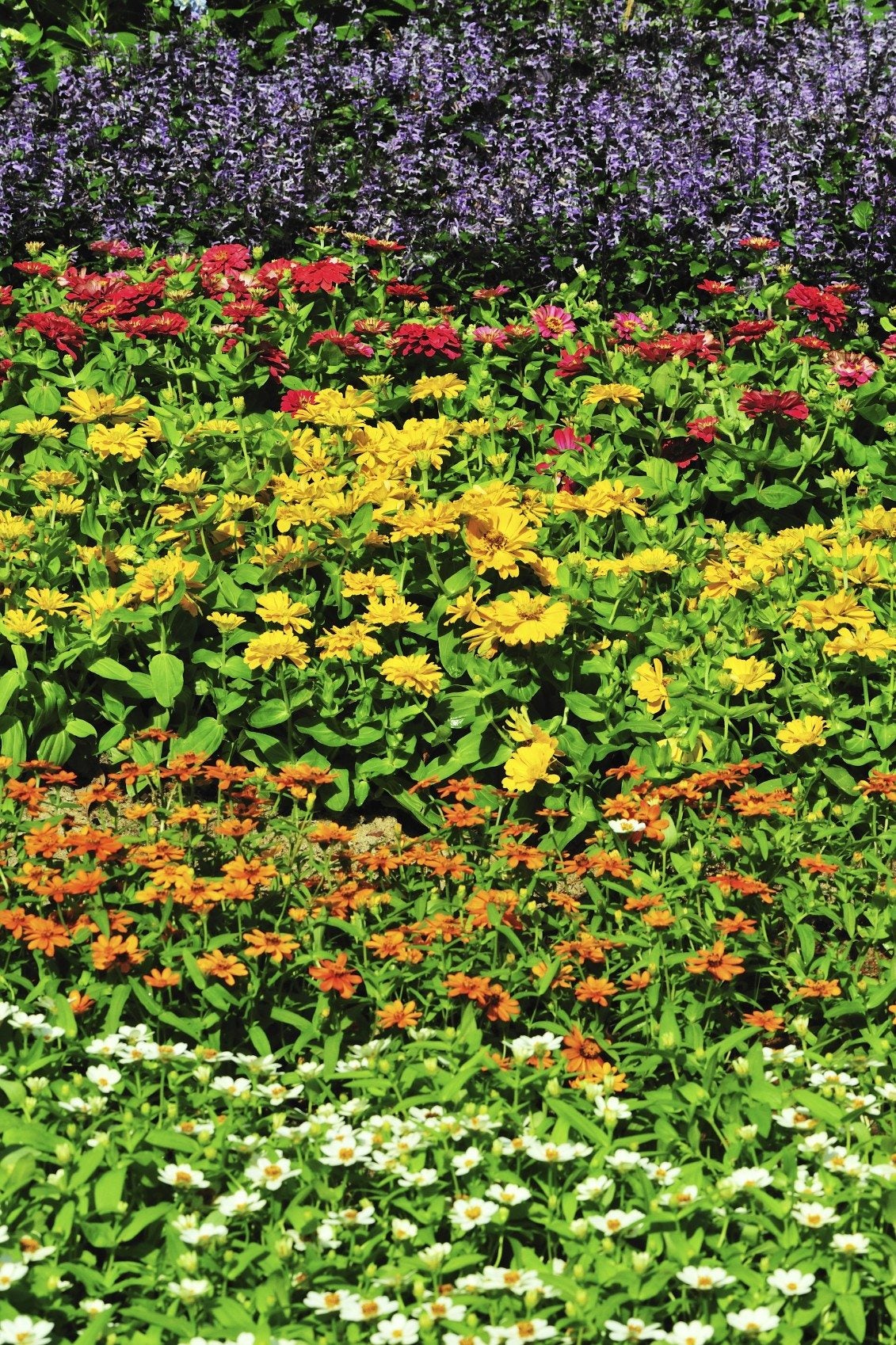Layered Garden Ideas: Learn About Planting A Garden In Layers
For both vertical and horizontal eye appeal, as well as seasonal interest, design and plant a layered garden.


Layering is an essential part of seasoning our cooking. Adding subtle layers of flavor to the pot seasons it and enhances the whole dish without an overwhelming final flavor.
Creating a layered garden has a similar purpose. It soothes the eye while enhancing other aspects of the garden. Planting a garden in layers considers both vertical and horizontal eye appeal but also the aspect in which we view the area and seasonal interest. Learn how to build a layered garden with a brief tutorial on the process and its components.
Steps to Planting a Garden in Layers
Layered garden ideas are not new but have been around as long as humankind has cultivated garden spaces for pleasure and productivity. The process takes some planning and time as the garden fills in, but the effect is unique at all times of the year and takes advantage of each plant's attributes, creating a rich artwork out of the landscape.
To start creating a layered garden, consider your soil and lighting needs, and picture the effect you wish to present. The first things to consider are access and borders. These "hardscaping" elements include walls, fences, paths, buildings, and other access and structural constructions.
Utilizing hardscape features to accent the natural aspects of the garden can be part of your vertical layering. This may mean having a clematis vine creep up the side of your home or a rose trellis creating a border between the ornamental and vegetable areas of the landscape.
It also helps to envision the actual areas to be planted so you can consider what types of installations you require for your vision. Trees and bushes are the next layer and are appealing in groups rather than sentry-like rows.
Next, we consider the medium-sized and smaller plants to go into each bed. Each plant has a unique form and tells a different story as the season progresses.
Gardening tips, videos, info and more delivered right to your inbox!
Sign up for the Gardening Know How newsletter today and receive a free copy of our e-book "How to Grow Delicious Tomatoes".
How to Build a Layered Garden
After a little planning for the look you want for each area of the landscape, you need to consider how to install the specimens you have chosen. Garden layering with plants must consider size, seasonality, form, and function. For instance, a perennial garden can have 5 foot (1.5 m.) tall plants, and plants as short and low as woolly thyme and anything in between. But it would be useless to plant the thyme behind some Joe Pye weed where access to the view would hide the cuddly little herbs as they sprawl across the ground.
Planting a garden in layers will ensure that the highest plants are at the farthest eye point of the garden with medium-sized in the middle and the lowest growing at the front. Layered garden ideas such as shade gardens, perennial beds, borders, and even xeriscape landscape areas can use this approach of vertical layering.
When considering garden layering with plants, it's important to look at the horizontal view. Successfully achieving horizontal layering gives a garden bed a mature, finished appearance. It all depends upon planting lower plants so that they will touch each other when they are mature. This promotes the impression of a sea of rolling color and texture that's easy on the eye and adds an artistic aspect to the garden.
While you're at it, look at which plants will have winter appeal, and don't hide these behind large plants that will cover their unique beauty. Some of these might be contorted hazel, red twig dogwood, or consider edgeworthia's bare branches adorned with tasseled blooms.
Once you have a sense of the plants you want and the layering approach you wish to take, repeat combinations, colors, forms, and textures to create unique patterns in the landscape.

Bonnie Grant is a professional landscaper with a Certification in Urban Gardening. She has been gardening and writing for 15 years. A former professional chef, she has a passion for edible landscaping.
-
 Try The Trend – Turn Any Bed Into A Keyhole Garden With This Clever In-Ground Composter
Try The Trend – Turn Any Bed Into A Keyhole Garden With This Clever In-Ground ComposterKeyhole gardening is an efficient and sustainable practice that saves space. Get started on this DIY project quickly and easily with an in-ground composter.
By Bonnie L. Grant
-
 4 Superfast Composting Methods: Turn Waste Into Garden Gold In 30 Days Or Less
4 Superfast Composting Methods: Turn Waste Into Garden Gold In 30 Days Or LessTry the fastest composting methods to turbocharge your pile and transform kitchen scraps and garden waste into finished compost in just a few weeks.
By Mary Ellen Ellis